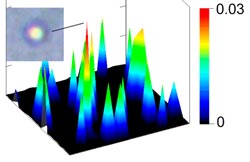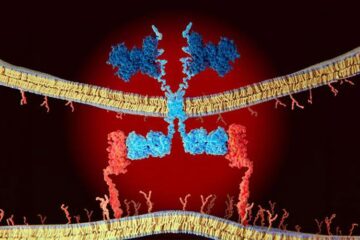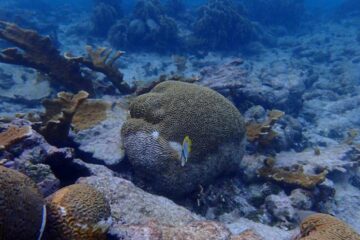A better look into cerebrospinal fluid

<br>
Cerebrospinal fluid (CSF) of the central nervous system disseminates numerous cells, proteins, microparticles, and DNA as potential biomarkers of many diseases and therapy efficacy.
For example, circulating tumor cells are a sign for metastatic cancer, bacteria can reveal an infectious meningitis or encephalitis, erythrocytes indicate a trauma, and tau-protein is a biomarker for Alzheimer’s disease.
However, current methods for detecting biomarker in CSF are far from ideal. A main drawback is that the tests are performed in vitro, and their sensitivity is limited by the sample volume. Rare circulating biomarkers such as tumor cell at the stage of latent metastasis remain undetectable. Furthermore, cytology is a quite subjective method depending on the experience of the laboratory technicians. Yet, other current methods show even higher false-negative results than cytology.
The problem could be solved by examining a larger volume. Ekaterina I. Galanzha and a team from the University of Arkansas for Medical Sciences thought to examine the whole CSF volume. To pursue this objective, they developed a method using in vivo photoacoustic flow cytometry (PAFC) for ultrasensitive detection of cells and nanoparticles in CSF. During PAFC, non-radiative relaxation of absorbed laser energy into heat leads to thermoelastic generation of sound.
PAFC is not sensitive to light scattering or autofluorescence and provides higher sensitivity and resolution in deeper tissue than other optical modalities. When CSF is irradiated through skin, photoacoustic waves from individual cells can be detected with an ultrasound transducer attached to the tissue over ventricles or spinal cord. The method is noninvasive for normal tissues as it operates with laser energy at levels that are safe for humans.
To extend diagnostic significance, PAFC was integrated with photothermal scanning cytometry/microscopy ex vivo using label-free mode as well as molecular targeting with low-toxicity bioconjugated nanoparticles. In photothermal thermal-lens schematic, laser induced temperature-dependent variation of the refractive index around absorbing zones is optically detected.
Contrast can be enhanced by labeling cells or molecules of interest with specifically binding nanoparticles such as gold nanorods. In the experiments, two types of nanorods were used with different absorption maxima for two color labeling.
In the CSF of tumor-bearing mice, the researchers molecularly detected in vivo circulating tumor cells before the development of breast cancer brain metastasis with 20-times higher sensitivity than with current assays. For the first time, they demonstrated assessing three pathways – blood, lymphatic, and CSF – of circulating tumor cells dissemination, tracking nanoparticles in CSF and their imaging ex vivo. The scientists were able to count leukocytes, erythrocytes, melanoma cells, and bacteria in label-free CSF samples.
In addition, they could image intracellular cytochromes, hemoglobin, melanin, and carotenoids, respectively, by labeling with specific binding gold nanorods.
Taking into account the safety of PAFC, the researchers expect its translation for use in humans to improve disease diagnosis beyond conventional detection limits. (Text contributed by K. Maedefessel-Herrmann)
Nedosekin, D.A., et al; J. Biophotonics 6(6-7), 523-533 (2013); DOI 10.1002/jbio.201200242
http://onlinelibrary.wiley.com/doi/10.1002/jbio.201200242/abstract
Wiley-VCH Verlag GmbH & Co. KGaA
Rotherstrasse 21
10245 Berlin
Germany
T +49 (0)30 47 031 321
F +49 (0)30 47 031 399
jbp@wiley.com
www.biophotonics-journal.org
www.wileyonlinelibrary.com
Media Contact
More Information:
http://www.wiley.comAll latest news from the category: Life Sciences and Chemistry
Articles and reports from the Life Sciences and chemistry area deal with applied and basic research into modern biology, chemistry and human medicine.
Valuable information can be found on a range of life sciences fields including bacteriology, biochemistry, bionics, bioinformatics, biophysics, biotechnology, genetics, geobotany, human biology, marine biology, microbiology, molecular biology, cellular biology, zoology, bioinorganic chemistry, microchemistry and environmental chemistry.
Newest articles

Economies take off with new airports
A global study by an SUTD researcher in collaboration with scientists from Japan explores the economic benefits of airport investment in emerging economies using nighttime satellite imagery. Be it for…

CAR T–cell immunotherapy targets
Pan-cancer analysis uncovers a new class of promising CAR T–cell immunotherapy targets. Scientists at St. Jude Children’s Research Hospital found 156 potential CAR targets across the brain and solid tumors,…

Stony coral tissue loss disease
… is shifting the ecological balance of Caribbean reefs. The outbreak of a deadly disease called stony coral tissue loss disease is destroying susceptible species of coral in the Caribbean…





















